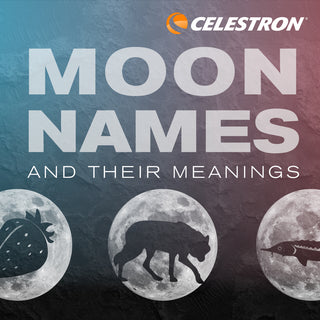What is the difference between a partial, annular, and total eclipse?
March 29, 2021

Solar and lunar eclipses happen every year, with a minimum of two and occasionally up to five eclipses in a year. There are different types of eclipses: total, partial, annular, penumbral, and hybrid. The last time we had five solar eclipses was in 1935 and the next time it will occur is 2206.
Below, you’ll find a description of each kind of eclipse and how they are distinguished.
Types of Solar Eclipses
A solar eclipse can only occur during a New Moon when the Moon moves between Earth and the Sun, forming a straight line.

 |
A total solar eclipse happens when the Sun is completely blocked by the Moon, creating a path of totality on Earth’s surface. Those inside the path of totality will experience “daytime darkness” and be able to observe the Sun’s corona. Individuals immediately outside of the path of totality will experience a partial solar eclipse. |
 |
A partial solar eclipse occurs when the Moon does not completely cover the Sun. They are only safe to observe with approved solar equipment. Partial solar eclipses are more common and happen twice a year. |
 |
An annular solar eclipse takes place when the Moon is centered in front of the Sun but does not completely cover the Sun’s disk. Because the Moon’s orbit around Earth is elliptical, rather than circular, an annular eclipse occurs when the Moon is further away from Earth and therefore appears smaller. The famous “ring of fire” phenomenon is visible during an annular eclipse. |
 |
A hybrid solar eclipse is a rare eclipse that is a combination of all three depending on the observer’s location. As the Moon's shadow moves across the Earth's surface, the eclipse starts off as annular eclipse and transitions to a total eclipse, finishing as an annular eclipse. Those that are outside of the path will see a partial eclipse. Hybrid eclipses happens once a decade with the last eclipse occurring on November 3, 2013 and the next one occurring April 20, 2023. |
Note: The famous Baily's beads phenomenon occurs when the Moon’s rugged terrain allows beads of sunlight to shine through some places. This effect is present in total, annular, and hybrid solar eclipses.
The 5 Stages of a Total Solar Eclipse:
- 1st Contact - Partial Eclipse begins - Moon becomes visible over the Sun's disk.
- 2nd Contact - Total Eclipse begins - Moon covers the entire disk of the Sun. Observers in totality may be able to see Baily's beads just before the start of totality.
- Totality and maximum eclipse: Moon completely covers the disk of the Sun and the Sun's corona is visible.
- 3rd Contact - Total eclipse ends - Moon starts moving away, and the Sun reappears. Observers in the umbra may be able to see Baily's beads again.
- 4th Contact - Partial eclipse ends - Eclipse ends as the Moon leaves the Sun's disk.
Types of Lunar Eclipses
A lunar eclipse is when the Earth comes between the Sun and the Moon and covers the Moon with its shadow. As the Sun’s light is refracted around the earth, the shadow gives the Moon a red-orange tint.

 |
A total lunar eclipse (also known as a Blood Moon) occurs when a full Moon is completely blocked from the Sun’s rays by Earth's shadow. The reason the Moon gives off a red-orange hint is that the Earth’s atmosphere bends sunlight and indirectly illuminates the Moon’s surface. A lunar eclipse can also be yellow, orange, or brown in color. This is because different types of dust particles or clouds in Earth's atmosphere allow different wavelengths of light to reach the surface of the Moon. |
 |
A partial lunar eclipse occurs when the Earth moves between the Sun and the Full Moon, but the objects are not precisely aligned. Only part of the Moon's visible surface moves into the dark part of the Earth's shadow. During this type of eclipse, the Moon also takes on a slight red-orange tint, but not across the entire lunar surface. |
 |
A penumbral lunar eclipse occurs when the Moon moves through the faint, outer part of Earth's shadow, the penumbra. This type of eclipse is not as dramatic as other types of lunar eclipses and is often mistaken for a regular Full Moon. |
The 7 Stages of a Total Lunar Eclipse:
- Penumbral eclipse begins - Earth's shadow starts moving over the Moon.
- Partial eclipse begins - Earth's umbra starts covering the Moon, making the eclipse more visible.
- Total eclipse begins - Earth's umbra completely covers the Moon and the Moon becomes red, brown, or yellow in color.
- Maximum eclipse
- Total eclipse ends - Earth's umbra starts moving away from the Moon's surface.
- Partial eclipse ends - Earth's umbra completely leaves the Moon's surface.
- Penumbral eclipse ends - Eclipse ends and Earth's shadow completely moves away from the Moon.


























